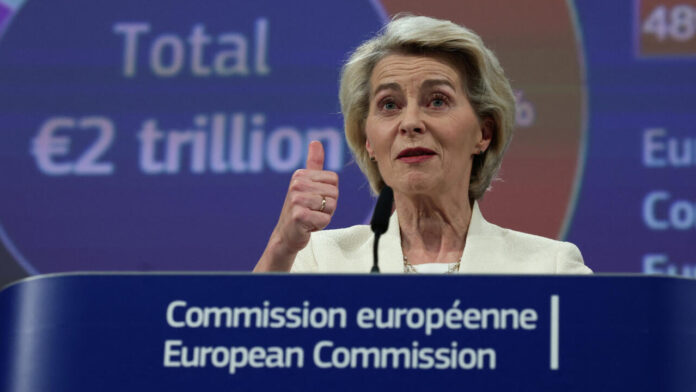The European Commission on Wednesday proposed a €2 trillion budget for the European Union covering the years 2028 to 2034, with a focus on economic competitiveness, defence, innovation, and clean technology.
The proposal amounts to 1.26% of the EU’s Gross National Income, up from 1.13% in the current seven-year budget.
Commission President Ursula von der Leyen said the plan reflects Europe’s ambition and challenges and aims to strengthen the bloc’s independence. The Commission also said the new budget structure shifts attention from traditional spending areas like agriculture and regional development toward newer priorities such as defence and industrial innovation.
The plan includes €451 billion for a new European Competitiveness Fund, €131 billion for defence and space, and €200 billion for external global programmes. It also sets aside €302 billion for farmers and a minimum of €218 billion for the EU’s least developed regions.
An additional €100 billion is proposed for Ukraine, outside the budget framework.
The Commission proposed new revenue sources, including a tax on companies operating in the EU with annual net turnover above €100 million in any member country. Most of the budget would still be funded by contributions from member governments.
The budget also aims to increase spending on migration and border management, triple current levels, and double the funding for the Horizon research programme. Thirty-five percent of the total budget is set to be allocated to climate and biodiversity-related efforts.
Several EU member states and lawmakers criticized the proposal. The Netherlands called the budget too high, while Hungary rejected funding for Ukraine, calling the plan unfair. The European Parliament, on the other hand, said the budget was not large enough to meet new goals without cutting existing priorities.
The proposal marks the beginning of negotiations among the 27 member states and the European Parliament. Budget talks are expected to cover spending priorities, funding sources, and how to manage repayments from the COVID-19 recovery fund.























